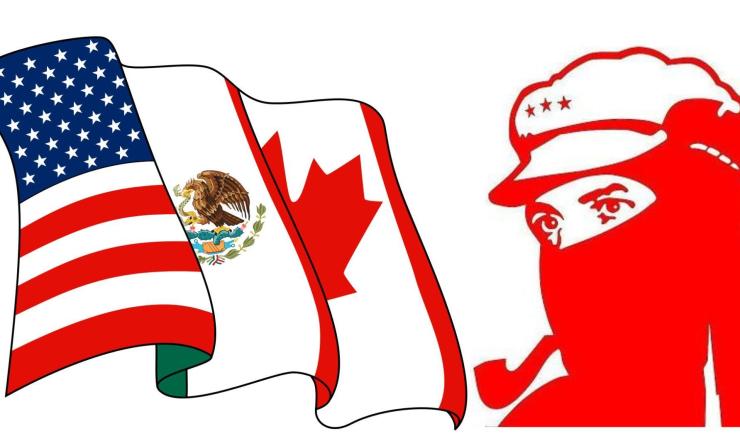Mexico. Thirty years after NAFTA and the uprising of the Zapatistas.

Last January it recalled the 30th anniversary of the North American Free Trade Agreement signed between the United States, Canada and Mexico as well as the insurrection of the Zapatista movement.
The indigenous movement that broke out at that time, led by the so-called “Subcomandante Marcos”, still exists in the Mexican state of Chiapas (bordering with Guatemala), but today has less weight and attention than in the past.
In a negotiation that was not clear, the government of then-president Carlos Salinas de Gortari decided not to confront the Zapatista movement militarily, opting for negotiation and allowing it to exercise a de facto government in a part of the territory of that state of Chiapas. This agreement worked for both parties. The insurrection did not spread but continued to exist. As for the Mexican government, it was able to isolate the movement, preventing its spread.
In January 1994, the North American trade integration agreement, called NAFTA, looked like a turning point for modern Mexico. A new beginning also started, which since the third decade of the 20th century had been governed by the Institutional Revolutionary Party (PRI), a hegemonic party without alternation, but with limited power: the presidential mandate was six years without any possibility of ever being re-elected, though the outgoing president would elect his successor, the process was called the “dedozo”.
After the PRI, the centre-right party called PAN governed for two terms, the third term saw the return of the PRI with Enrique Peña Nieto, and finally with Manuel Lopez Obrador of MORENA (Movimiento Regeneración Nacional (National Regeneration Movement) as president, which embodied the return of traditional populism, but with pragmatism in relations with the United States.
In economic terms, Mexico is celebrating three decades of trade integration with the United States and Canada with a growing economy, which is attractive to investors. Mexico – together with Chile it is the country with the largest number of trade agreements with the world in Latin America – has integrated economically with the United States and Canada and increased its role as an exporting country.
A long the years NAFTA was reformulated and renamed USMCA – The United States-Mexico-Canada Agreement – which entered into force on July 1, 2020. But this economic integration also had a geopolitical face.
In the American view, the hemisphere runs from Alaska in the north to Tierra del Fuego in the south. North America is assumed to be a region that integrates Mexico with the United States and Canada. In geopolitical terms, for Washington, the border with Guatemala is an integrated space in its own right.
This does not prevent the existence of conflicts such as the one generated by the growing illegal immigration of Mexicans and Latin Americans crossing the southern border of the United States. But integration is not just economic.
Lopez Obrador’s pragmatism has allowed him to maintain good relations with Trump and Biden. In foreign policy, Mexico maintains its traditional attitude by keeping a low-profile role in international relations and avoiding a regional leadership role.
At the national level, Lopez Obrador has delegated a growing role to the Armed Forces by increasingly expanding the military role beyond its specific security area. In 2023 he gave the Navy a role in the administration of the ports and in the corridor that connects the Atlantic with the Pacific.
He relaunched the Mexican airline, under the leadership and control of the Air Force. He launched the national production of medicines with a distribution system throughout the territory and appointed a general as leader. This is the weakness of the Mexican state that has made it increasingly rely on the military structure which maintains an important organisation, discipline and territorial deployment.
As regards the presidential elections which will be held on June 2, the polls give a clear advantage to the official candidate, Claudia Sheinmaum. She is expected to defeat the only opposition option, Xchitl Gàlvez, with the support of the centre-right PAN party; the PRI, whose last run of government was pragmatic social democracy; and the left-wing PRD. The US presidential election will be held five months after the Mexican one. A possible Trump victory is not perceived by the current Mexican president as a threat. (Open Photo: Logo of the NAFTA Secretariat of North American Free Trade Agreement. CC BY 3.0/ Nicoguaro – Subcomandante Marcos. CC BY-SA 4.0/ Mangokeylime)
Rosendo Fraga/Nueva Mayoria
Latin American Affairs Analyst



